|
|
 |
|
Katarina
Like most melee matchups,  Taliyah does have the upper hand in the first level or two, but once Taliyah does have the upper hand in the first level or two, but once  Katarina unlocks all her abilities, the dynamic drastically changes. Katarina unlocks all her abilities, the dynamic drastically changes.  Katarina is another champion that is heavily favored by the new runes system, and fully abuses Katarina is another champion that is heavily favored by the new runes system, and fully abuses  Electrocute's rune tree along with having strong early itemization paths. I would honestly advise you just ban or dodge this matchup in higher elo. Like Electrocute's rune tree along with having strong early itemization paths. I would honestly advise you just ban or dodge this matchup in higher elo. Like  Zed, this matchup is extremely difficult, especially against people who know how to abuse the champion's strengths and play around yours. A couple Important details to note about how her kit works are that the dagger from Zed, this matchup is extremely difficult, especially against people who know how to abuse the champion's strengths and play around yours. A couple Important details to note about how her kit works are that the dagger from  Bouncing Blade will always land behind its target, and that Bouncing Blade will always land behind its target, and that  Shunpo's cooldown is not fully reset at early levels with dagger pickups, and instead scales with her champion's level. Additionally, Shunpo's cooldown is not fully reset at early levels with dagger pickups, and instead scales with her champion's level. Additionally,  Voracity will only refund Voracity will only refund  Shunpo's cooldown on dagger pickups—the rest of her abilities are only reset on a kill or assist. The standard way that Shunpo's cooldown on dagger pickups—the rest of her abilities are only reset on a kill or assist. The standard way that  Katarina will try to allin early levels is to directly Katarina will try to allin early levels is to directly  Shunpo on top of your champion while immediately casting Shunpo on top of your champion while immediately casting  Preparation and Preparation and  Bouncing Blade after landing—the Bouncing Blade after landing—the  Preparation dagger will AoE and refresh Preparation dagger will AoE and refresh  Shunpo at right about the same time as the dagger from Shunpo at right about the same time as the dagger from  Bouncing Blade lands behind you. Bouncing Blade lands behind you.
|
|
|
|
By inserting autoattacks with her early AD itemization,  Electrocute, and Electrocute, and  Ignite, it's a huge kill threat if you present the opportunity. This is further magnified by Ignite, it's a huge kill threat if you present the opportunity. This is further magnified by  Taliyah's very telegraphed kit giving Taliyah's very telegraphed kit giving  Katarina many potential mistakes to exploit and snowball on. Because of how the dagger from Katarina many potential mistakes to exploit and snowball on. Because of how the dagger from  Bouncing Blade works, there is some merit in walking forward to get out of the AoE if there are no other potential threats you need to worry about. It's extremely difficult to land Bouncing Blade works, there is some merit in walking forward to get out of the AoE if there are no other potential threats you need to worry about. It's extremely difficult to land  Seismic Shove on a Seismic Shove on a  Katarina that knows what they are doing after the first couple levels, and having abilities down gives Kat room to maneuver in the lane due to her shorter cooldowns relative to Taliyah. Since many Katarina players will use Katarina that knows what they are doing after the first couple levels, and having abilities down gives Kat room to maneuver in the lane due to her shorter cooldowns relative to Taliyah. Since many Katarina players will use  Preparation (if it's available) immediately before ulting, an attentive Preparation (if it's available) immediately before ulting, an attentive  Katarina will be able to dodge an attempted interrupt as well. Extremely risky guesses on where she will go (such as casting Katarina will be able to dodge an attempted interrupt as well. Extremely risky guesses on where she will go (such as casting  Seismic Shove on a dagger's location) have a huge upside, but if you don't respect her ranges and cooldowns while doing so you can easily get killed for it. If Seismic Shove on a dagger's location) have a huge upside, but if you don't respect her ranges and cooldowns while doing so you can easily get killed for it. If  Katarina does make mistakes in the early game and mismanages her cooldowns (like blinking to a dagger without an immediate way out), know to punish them accordingly, even if it's just working her health bar down with Katarina does make mistakes in the early game and mismanages her cooldowns (like blinking to a dagger without an immediate way out), know to punish them accordingly, even if it's just working her health bar down with  Threaded Volley and autoattack harassment. As long as you know how the champion works and are actively paying attention to where daggers are falling, you shouldn't be dying to any extremely forced 1v1 engages. Don't forget to ping your lane whenever she goes missing, and try to prioritize vision in the river to know when Threaded Volley and autoattack harassment. As long as you know how the champion works and are actively paying attention to where daggers are falling, you shouldn't be dying to any extremely forced 1v1 engages. Don't forget to ping your lane whenever she goes missing, and try to prioritize vision in the river to know when  Katarina commits to roams. If your jungler is low health in a skirmish and you know Katarina commits to roams. If your jungler is low health in a skirmish and you know  Katarina will get there first, know how to pick your battles and not die rushing into an inevitable reset. Your goal is to stay alive and prevent snowballing before big teamfights begin, and you can hopefully rely on the rest of your team's crowd control to keep a non-fed Katarina at bay. Lastly, even if the Katarina is behind, highly consider itemizing magic resistance to avoid any potential teamfight resets after she completes Katarina will get there first, know how to pick your battles and not die rushing into an inevitable reset. Your goal is to stay alive and prevent snowballing before big teamfights begin, and you can hopefully rely on the rest of your team's crowd control to keep a non-fed Katarina at bay. Lastly, even if the Katarina is behind, highly consider itemizing magic resistance to avoid any potential teamfight resets after she completes  Sorcerer's Shoes and Sorcerer's Shoes and  Haunting Guise. Haunting Guise. |
|
|
|
 |
|
Lucian
A terror to most mid lane mages, Taliyah deals with Lucian just fine. Just like all the other AD laners, the loss of armor runes is noticable in the first few levels, making you have to respect his damage a bit more early on. Taliyah's kit has amazing tools to deal with Lucian's early aggression, provided you aren't missing with  Threaded Volley's damage, or not respecting his insane level 2. Because dashing is an important part of his trading pattern, Threaded Volley's damage, or not respecting his insane level 2. Because dashing is an important part of his trading pattern,  Unraveled Earth gets a ton of value over the course of the lane. Ideally you want to stay in the range where he needs to commit his dash to get close to you, then doesn't have it to get out of Threaded Volley's trajectory. Don't bother trying to hit Unraveled Earth gets a ton of value over the course of the lane. Ideally you want to stay in the range where he needs to commit his dash to get close to you, then doesn't have it to get out of Threaded Volley's trajectory. Don't bother trying to hit  Seismic Shove until he commits his dash in some way—wasting it is just giving him an opportunity to jump on you. Use it in combination with the remaining minefield from Seismic Shove until he commits his dash in some way—wasting it is just giving him an opportunity to jump on you. Use it in combination with the remaining minefield from  Unraveled Earth after he dashes to get the most out of the ability. You can take either Unraveled Earth after he dashes to get the most out of the ability. You can take either  Exhaust or Exhaust or  Heal in this matchup, but against better players that won't be so easily baited Heal in this matchup, but against better players that won't be so easily baited  Heal becomes a bit more appealing in my eyes. Heal becomes a bit more appealing in my eyes.
|
|
|
 |
|
Malzahar
His first several levels aren't particularly strong outside of his guaranteed damage with  Malefic Visions along with with Malefic Visions along with with  Summon Aery if they elect for that keystone. Remember to take note of whether or not the player has Summon Aery if they elect for that keystone. Remember to take note of whether or not the player has  Manaflow Band, because a lack of it signifies Malz took Manaflow Band, because a lack of it signifies Malz took  The Ultimate Hat and will look for more plays with their ultimate rather than having more mana to work with early. Malzahar's high mana costs early make running him out of mana before an optimal first back timing a potential strategy to aim for, especially if they are lacking The Ultimate Hat and will look for more plays with their ultimate rather than having more mana to work with early. Malzahar's high mana costs early make running him out of mana before an optimal first back timing a potential strategy to aim for, especially if they are lacking  Manaflow Band and miss out on early CS to purchase Manaflow Band and miss out on early CS to purchase  Lost Chapter. Many Malzahar players will always just put their Q behind you while trying to hit it in lane, so keep an eye out for player patters like this that you can exploit. As long as Lost Chapter. Many Malzahar players will always just put their Q behind you while trying to hit it in lane, so keep an eye out for player patters like this that you can exploit. As long as  Call of the Void isn't landing, Taliyah will have more damage output in all-in attempts than the Malzahar. Call of the Void isn't landing, Taliyah will have more damage output in all-in attempts than the Malzahar.
|
|
|
|
Like most immobile mage matchups, a kill is practically guaranteed if  Seismic Shove lands without an enemy minion wave in the way, and it's a blessing and a curse that Seismic Shove lands without an enemy minion wave in the way, and it's a blessing and a curse that  Threaded Volley will often be killing Malzahar's voidlings on the first couple shots. Save Threaded Volley will often be killing Malzahar's voidlings on the first couple shots. Save  Unraveled Earth or Unraveled Earth or  Threaded Volley to one-shot his voidlings if he summons them early game—without their damage, his early pushing is severely hampered and he has to commit either a lot of mana to use Threaded Volley to one-shot his voidlings if he summons them early game—without their damage, his early pushing is severely hampered and he has to commit either a lot of mana to use  Call of the Void more than he'd like or autoattack several times to make up for it. Pushing lane next to him and not actively trying to kill the voidlings will just lead to him outpushing and limiting your early roam potential. After he gets Call of the Void more than he'd like or autoattack several times to make up for it. Pushing lane next to him and not actively trying to kill the voidlings will just lead to him outpushing and limiting your early roam potential. After he gets  Lost Chapter, his mana sustain goes through the roof and running him out of mana becomes much less feasible. Post 6, respect his jungler's gank potential but keep in mind that you can still kill him through his ultimate in a 1v1— Lost Chapter, his mana sustain goes through the roof and running him out of mana becomes much less feasible. Post 6, respect his jungler's gank potential but keep in mind that you can still kill him through his ultimate in a 1v1— Threaded Volley's pellets will continue to fire during the suppression if you use the ability before he casts Threaded Volley's pellets will continue to fire during the suppression if you use the ability before he casts  Nether Grasp. If you're dying to repeat ganks and Malz or the jungler isn't Flashing for it, then your vision around mid lane is likely to blame. Malzahar is one of the few champions that building an early Nether Grasp. If you're dying to repeat ganks and Malz or the jungler isn't Flashing for it, then your vision around mid lane is likely to blame. Malzahar is one of the few champions that building an early  Quicksilver Sash against is worth doing, especially if you are the primary damage threat for your team, or if he has a high-damage jungler to facilitate. Even if you end up locked in a passive gridlock of a lane, remember that if both sides just delete the opposing minion wave, then the next wave will take a while to show up in the first place. This allows some space for roaming without losing too much gold and experience. Malz shouldn't be able to punish a roam with taking your turret until he's gotten a lot of damage on it already as well. In practically every Malz lane, you should be going at least even and getting enough income from him afk pushing to impact the rest of the map. Quicksilver Sash against is worth doing, especially if you are the primary damage threat for your team, or if he has a high-damage jungler to facilitate. Even if you end up locked in a passive gridlock of a lane, remember that if both sides just delete the opposing minion wave, then the next wave will take a while to show up in the first place. This allows some space for roaming without losing too much gold and experience. Malz shouldn't be able to punish a roam with taking your turret until he's gotten a lot of damage on it already as well. In practically every Malz lane, you should be going at least even and getting enough income from him afk pushing to impact the rest of the map. |
|
|
|
 |
|
Orianna
Orianna has early lane priority in practically all of her matchups, and Taliyah isn't much of an exception. Orianna is also one of the few mid laners that can contest Taliyah's early game sustained damage output due to the high uptime of her passive and  Command: Attack, so be wary. Because of the positioning-based nature of Taliyah's Command: Attack, so be wary. Because of the positioning-based nature of Taliyah's  Threaded Volley, it's pretty easy for Orianna to throw Q+W into a place where you want to walk to. If you aren't careful or paying attention, you can lose a lot of health this away against competent Orianna players. This issue is mostly remedied after you complete your boots and can more easily get out of the ball's trajectory. If you have Threaded Volley, it's pretty easy for Orianna to throw Q+W into a place where you want to walk to. If you aren't careful or paying attention, you can lose a lot of health this away against competent Orianna players. This issue is mostly remedied after you complete your boots and can more easily get out of the ball's trajectory. If you have  Flash up, remember that you can use it to dodge Flash up, remember that you can use it to dodge  Command: Shockwave fairly easily in a 1v1 and it will often win you the fight. Usually this matchup becomes something of an even farm lane, because of Orianna's slight priority in the early game and Taliyah's ability to farm safely and wait for opportunities in other lanes, or ones created by the jungler on both teams. Command: Shockwave fairly easily in a 1v1 and it will often win you the fight. Usually this matchup becomes something of an even farm lane, because of Orianna's slight priority in the early game and Taliyah's ability to farm safely and wait for opportunities in other lanes, or ones created by the jungler on both teams.
|
|
|
 |
|
Syndra
Dodging level 1  Dark Sphere harass is important, and only gets more so as the lane progresses. Syndra players will often try to go for it when you look to last hit minions with your autoattack, or stand in an efficient position for Dark Sphere harass is important, and only gets more so as the lane progresses. Syndra players will often try to go for it when you look to last hit minions with your autoattack, or stand in an efficient position for  Threaded Volley. Be aware of any Dark Spheres sitting on the ground in lane to avoid getting hit by a cheeky stun and killed, even more so against competent players. Raw stuns are relatively easy to anticipate and dodge, but getting hit by one you don't expect can lead to a bad trade or even a death. If you are able to get an early lead and snowball, it's not hard to get repeated kills against Syndra. The opposite is also true if you make any mistakes, as both champions are high damage with no mobility (which you can probably see is a recurring theme in a large amount of Taliyah's matchups). Even while ahead, an early Threaded Volley. Be aware of any Dark Spheres sitting on the ground in lane to avoid getting hit by a cheeky stun and killed, even more so against competent players. Raw stuns are relatively easy to anticipate and dodge, but getting hit by one you don't expect can lead to a bad trade or even a death. If you are able to get an early lead and snowball, it's not hard to get repeated kills against Syndra. The opposite is also true if you make any mistakes, as both champions are high damage with no mobility (which you can probably see is a recurring theme in a large amount of Taliyah's matchups). Even while ahead, an early  Mercury's Treads purchase makes it much harder for Syndra to kill you and gives you movement speed to dodge her abilities and hit yours. Similarly to Mercury's Treads purchase makes it much harder for Syndra to kill you and gives you movement speed to dodge her abilities and hit yours. Similarly to  Ahri, Ahri,  Cleanse is also near-mandatory against any jungler that can CC chain you with Syndra's stun (don't be like Jensen vs Faker at the 2016 world championship). Cleanse is also near-mandatory against any jungler that can CC chain you with Syndra's stun (don't be like Jensen vs Faker at the 2016 world championship).
|
|
|
 |
|
Talon
Take  Exhaust or Exhaust or  Barrier— Barrier— Exhaust is stronger pre-6, while Exhaust is stronger pre-6, while  Barrier is better for personal survivability after Barrier is better for personal survivability after  Shadow Assault is skilled. Another matchup that is extremely favored for Taliyah early (especially at level 3), but becomes the opposite as the game goes on. As long as you aren't giving him an easy allin at level 2, the rest of the lane up until level 6 is extremely straightforward—Talon has no real ways to deal with Taliyah's early game harassment, and needs several levels to work with to be a real threat. Even though the first five or so levels are difficult for Talon, if he has Shadow Assault is skilled. Another matchup that is extremely favored for Taliyah early (especially at level 3), but becomes the opposite as the game goes on. As long as you aren't giving him an easy allin at level 2, the rest of the lane up until level 6 is extremely straightforward—Talon has no real ways to deal with Taliyah's early game harassment, and needs several levels to work with to be a real threat. Even though the first five or so levels are difficult for Talon, if he has  Ignite up when he gets level six his kill potential goes through the roof. Look to get an early Ignite up when he gets level six his kill potential goes through the roof. Look to get an early  Seeker's Armguard so that he can't easily kill you in lane (if he has ult and ignite up when you both recall, the armor is more important than Seeker's Armguard so that he can't easily kill you in lane (if he has ult and ignite up when you both recall, the armor is more important than  Lost Chapter), and put a lot of priority on finishing Lost Chapter), and put a lot of priority on finishing  Zhonya's Hourglass for the active after you get your mana sorted. The Zhonya's Hourglass for the active after you get your mana sorted. The  Stopwatch from Stopwatch from  Perfect Timing is also a huge deterrent, since it will come online at about the same time as Perfect Timing is also a huge deterrent, since it will come online at about the same time as  Shadow Assault. Due to Talon's amazing roaming potential, remember to ping when he leaves lane and get the lane shoved to turret instead of facechecking him if you don't have vision. Against Talon roams, wards along the jungle paths that he wants to jump through with E can be more useful than vision only in the river. Shadow Assault. Due to Talon's amazing roaming potential, remember to ping when he leaves lane and get the lane shoved to turret instead of facechecking him if you don't have vision. Against Talon roams, wards along the jungle paths that he wants to jump through with E can be more useful than vision only in the river.
|
|
|
 |
|
Twisted Fate
TF and Taliyah are similar champions, but only one of them has to hit a skillshot. I would advise always taking  Cleanse in order to not die to jungle ganks along with gold card + Cleanse in order to not die to jungle ganks along with gold card +  Flash. Taliyah has a bit of a range advantage in lane and higher damage early-game, but Twisted Fate has the better ultimate for early-game roaming and making picks. Because of this, his counterganks to yours are deadly, so be choosy about how you roam. Make sure not to stand next to minions level 1 so you don't take free harass from his red card waveclear, and constantly try to stay at the range where you can harass with Flash. Taliyah has a bit of a range advantage in lane and higher damage early-game, but Twisted Fate has the better ultimate for early-game roaming and making picks. Because of this, his counterganks to yours are deadly, so be choosy about how you roam. Make sure not to stand next to minions level 1 so you don't take free harass from his red card waveclear, and constantly try to stay at the range where you can harass with  Threaded Volley but he can't autoattack you. Like every other immobile mage, if you're able to land Threaded Volley but he can't autoattack you. Like every other immobile mage, if you're able to land  Seismic Shove you will be able to snowball a lead, and hopefully bring that lead to other lanes. Just remember to always respect the enemy jungler and not play too aggressive, since easily setting up team members to get kills is where Seismic Shove you will be able to snowball a lead, and hopefully bring that lead to other lanes. Just remember to always respect the enemy jungler and not play too aggressive, since easily setting up team members to get kills is where  Twisted Fate shines. Twisted Fate shines.
|
|
|
 |
|
Yasuo
Take  Exhaust, and give him respect from level 1 onwards. With the removal of armor seals from the old system, this matchup gets a lot scarier early-game. Yasuo can easily get to Taliyah and kill her with his high mobility and damage, so it's very much a lane where you play to stay alive early and farm instead of trying to aggressively fight him. Once Taliyah gets to about level 7 with a Exhaust, and give him respect from level 1 onwards. With the removal of armor seals from the old system, this matchup gets a lot scarier early-game. Yasuo can easily get to Taliyah and kill her with his high mobility and damage, so it's very much a lane where you play to stay alive early and farm instead of trying to aggressively fight him. Once Taliyah gets to about level 7 with a  Lost Chapter purchase, you can waveclear safely and wait for the Yasuo player to make mistakes for you to punish. Lost Chapter purchase, you can waveclear safely and wait for the Yasuo player to make mistakes for you to punish.  Unraveled Earth is an amazing ability against Yasuo, since he will take a lot of damage if he dashes through it to get to you and it is not blocked at all by Unraveled Earth is an amazing ability against Yasuo, since he will take a lot of damage if he dashes through it to get to you and it is not blocked at all by  Wind Wall. If you want to Wind Wall. If you want to  Seismic Shove in front of you while he approaches, do it quickly, as Yasuo can dash through you with his E to dodge it. If he's already used E on your champion to gapclose though, it's a free W for Taliyah. If you are doing well and Yasuo is having a hard time getting on to you, you can forgo early armor purchases and rush to Seismic Shove in front of you while he approaches, do it quickly, as Yasuo can dash through you with his E to dodge it. If he's already used E on your champion to gapclose though, it's a free W for Taliyah. If you are doing well and Yasuo is having a hard time getting on to you, you can forgo early armor purchases and rush to  Morellonomicon and boots for the damage powerspike, since he shouldn't be able to get on you through all that waveclear. Morellonomicon and boots for the damage powerspike, since he shouldn't be able to get on you through all that waveclear.
|
|
|
 |
|
Zed
This is easily one of Taliyah's worst matchups, and unfortunately has a high soloqueue pick rate as well. Be wary of the  Zed counterpick if you are planning on picking Taliyah blind. If you do end up playing against him, remember that pre-6 he is extremely gated by his Zed counterpick if you are planning on picking Taliyah blind. If you do end up playing against him, remember that pre-6 he is extremely gated by his  Living Shadow cooldown, which is 22 seconds base at rank 1. When the ability is down, you have a lot more freedom for harassment and ganking, and because of it's long CD and Zed's melee range the matchup is pretty even until ultimates are involved. Post 6 trying to land Living Shadow cooldown, which is 22 seconds base at rank 1. When the ability is down, you have a lot more freedom for harassment and ganking, and because of it's long CD and Zed's melee range the matchup is pretty even until ultimates are involved. Post 6 trying to land  Seismic Shove on Zed because nearly impossible if they have the reactions to use either of his dashes to dodge it and immediately threaten an allin. Also keep in mind that Seismic Shove on Zed because nearly impossible if they have the reactions to use either of his dashes to dodge it and immediately threaten an allin. Also keep in mind that  Death Mark will always deposit Zed in the same location with the same delay after the animation every time, which is the far end of your champion relative to where he casted his ultimate. Death Mark will always deposit Zed in the same location with the same delay after the animation every time, which is the far end of your champion relative to where he casted his ultimate.
|
|
|
|
Get good with the timing and it becomes easy to land a  Seismic Shove combo immediately after he comes out of the ultimate's animation, but attentive Zeds may be mashing the Seismic Shove combo immediately after he comes out of the ultimate's animation, but attentive Zeds may be mashing the  Flash key during the animation to immediately escape the Flash key during the animation to immediately escape the  Seismic Shove and gain a ton more kill pressure. If he is roaming, shove the wave and don't facecheck without vision, since it's easy for him to bait you into counter-roaming and kill you in the river. Take Seismic Shove and gain a ton more kill pressure. If he is roaming, shove the wave and don't facecheck without vision, since it's easy for him to bait you into counter-roaming and kill you in the river. Take  Exhaust and build an early Exhaust and build an early  Seeker's Armguard and try to farm without dying in lane after level 6, while putting a high value on finishing Seeker's Armguard and try to farm without dying in lane after level 6, while putting a high value on finishing  Zhonya's Hourglass when you can. Unless you are much better than the Zed player this matchup is extremely frustrating, and I would advise trying to avoid it as much as possible. The same goes for Zhonya's Hourglass when you can. Unless you are much better than the Zed player this matchup is extremely frustrating, and I would advise trying to avoid it as much as possible. The same goes for  Katarina, but unlike Zed, she gains all her kill potential at level 3 instead of level 6. Katarina, but unlike Zed, she gains all her kill potential at level 3 instead of level 6. |
|
I’m planning on finishing the missing lane matchups once I have a more confident opinion on them in the new season, along with adding better visual aids. This guide wouldn't be possible without the help of:
|
|
 |
|
Hopper for visuals, BBCode, and input
|
|
|
 |
|
PsiGuard for proofreading and general guide advice
|
Grumpy Trees for proofreading and editing
lolwiki's page on Taliyah for detailed ability tooltips
If you appreciated this guide or have any additional questions, feel free to leave a comment and I’ll try my best to respond. If you want to see my sporadic and infrequent streams, I have a twitch channel embedded below. If the stream is on, it's usually soloqueue or mid lane coaching.
|
 Thank You!
Thank You!

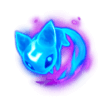
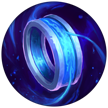
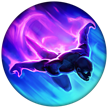
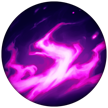

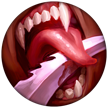
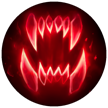



























 Equalizer if you are familiar with those champions. The 1 second delay after casting is a long time, so you must predict movements with it to hit people. The most obvious application of the spell is to throw people towards you into your
Equalizer if you are familiar with those champions. The 1 second delay after casting is a long time, so you must predict movements with it to hit people. The most obvious application of the spell is to throw people towards you into your 






































 23,950
23,950
 12
12



















You must be logged in to comment. Please login or register.